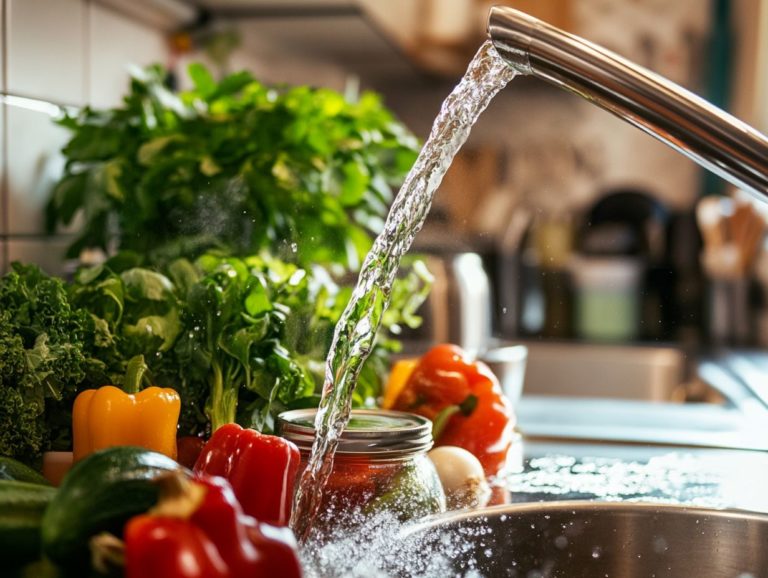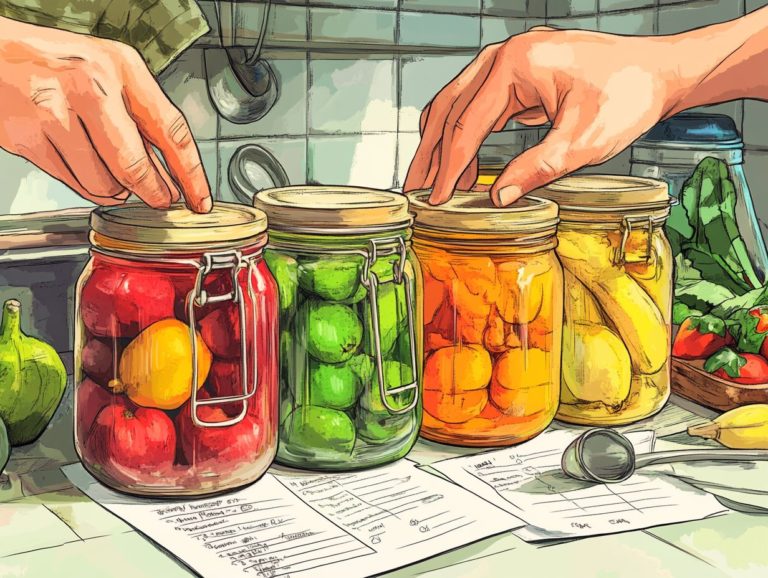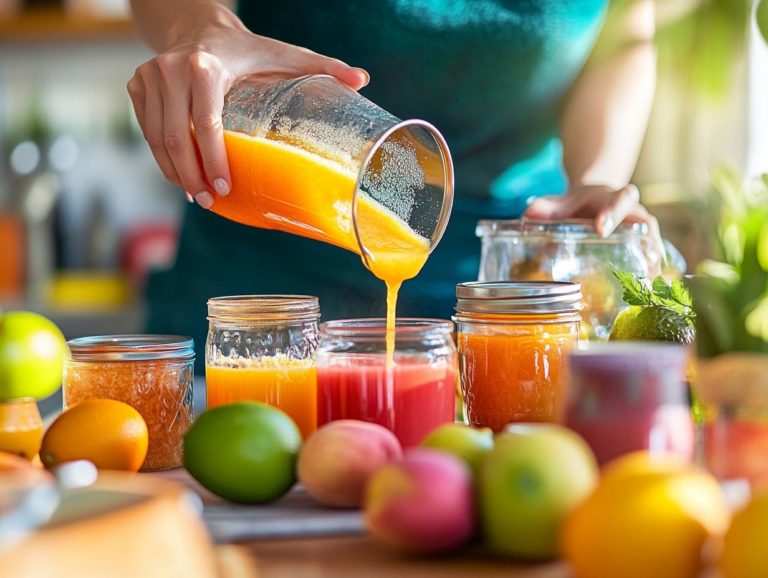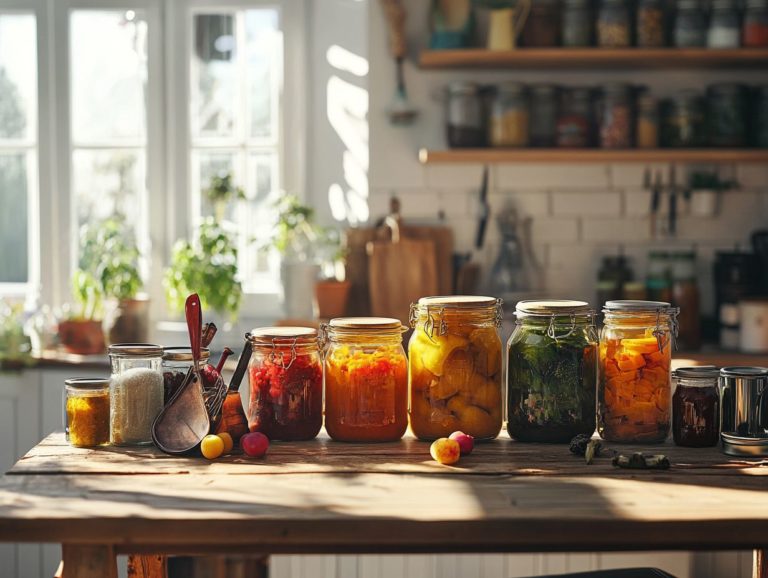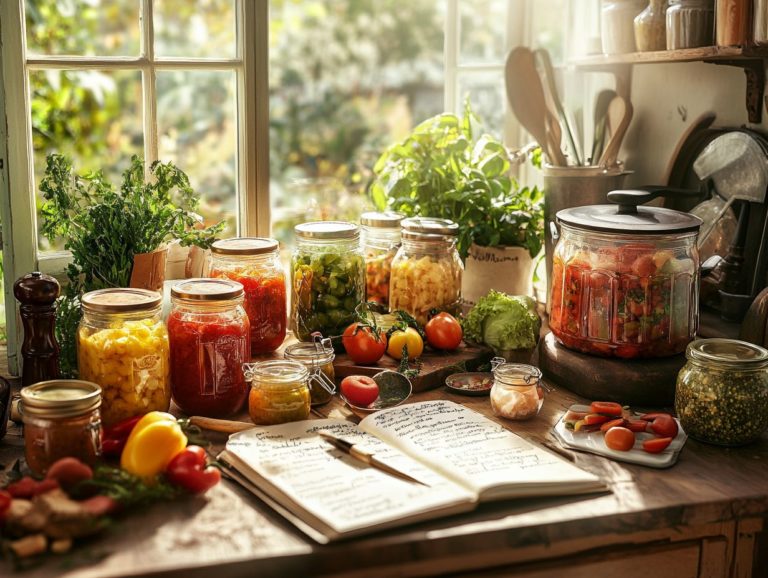How to Create Your Own Canning Recipe
Canning is a gratifying and practical skill that enables you to preserve seasonal flavors and craft delightful homemade goods.
Whether you aim to store fruits, vegetables, or sauces, grasping the canning process is crucial.
This guide will walk you through the essentials, from the necessary equipment to creating your own unique recipes.
You’ll also discover how to adjust for varying altitudes and ensure safety through proper testing.
Are you ready to elevate your kitchen into a canning haven? Let s dive in!
Contents
- Key Takeaways:
- The Basics of Canning
- Creating Your Own Canning Recipe
- Testing and Adjusting Your Recipe
- Documenting Your Recipe
- Frequently Asked Questions
- What is canning and why would I want to create my own recipe?
- Ready to start canning? Here’s what you’ll need!
- What are the key steps to creating my own canning recipe?
- How can I ensure the safety of my homemade canning recipe?
- Can I use any type of jar for my homemade canning recipe?
- What are some common mistakes to avoid when creating my own canning recipe?
Key Takeaways:
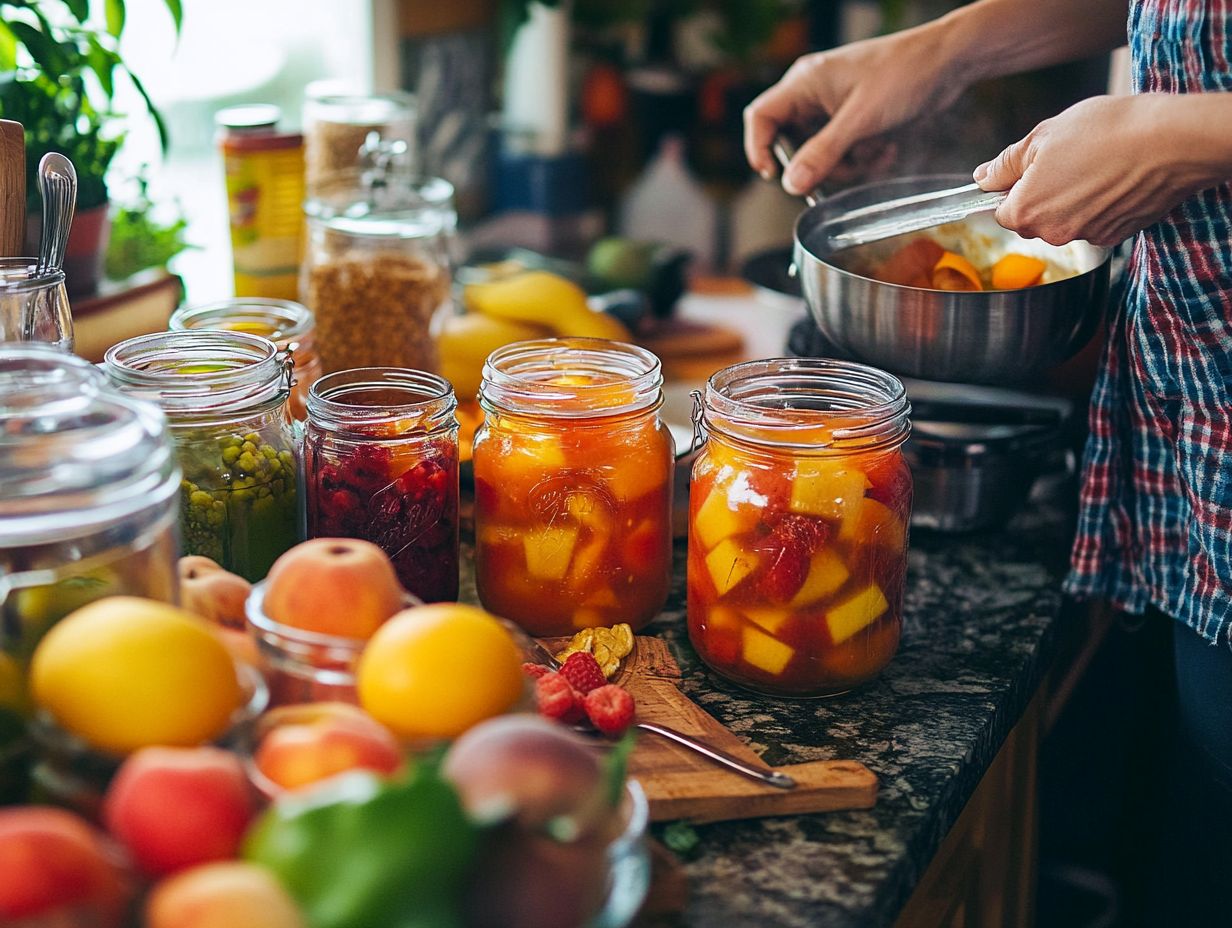
- Understand the canning process before creating your own recipe.
- Choose ingredients carefully and calculate proper ratios for safe and delicious results.
- Test and adjust your recipe for safety, document it accurately, and share with others.
The Basics of Canning
To be a great canner, understanding the basics is key!
Canning includes different cooking methods designed to safely preserve high-acid foods like tomatoes and pickles, while also adhering to essential safety practices.
High-acid foods are those with a pH level of 4.6 or lower, like tomatoes and pickles. You ll want to familiarize yourself with the different types of canning, such as water bath canning and pressure canning, as these are key to ensuring the quality and safety of your preserved goods.
Embracing seasonal preserving lets you enjoy fresh produce all year.
Understanding the Canning Process
The canning process is an art of food preservation that involves sealing high-acid foods in jars and processing them to thwart spoilage, ensuring protection from botulism and other pathogens.
Before you embark on your canning journey, it s essential to choose the right type of food. High-acid options like tomatoes and fruits demand a different approach compared to low-acid foods such as vegetables or meats.
Understanding pH levels is crucial; high-acid foods can be safely processed with a water bath, while low-acid foods require pressure canning to rid them of harmful bacteria.
Sticking to the guidelines is essential for your food s safety and effectively preventing botulism, which can flourish in improperly canned low-acid foods.
Equipment and Supplies Needed
To embark on your canning journey, it’s essential to gather the right equipment and supplies. You ll want to have key items like Ball jars, canning lids, and a food mill for processing your ingredients.
A canner pot, complete with a secure lid and a rack, plays a crucial role in maintaining an even temperature throughout the preservation process, whether you choose water bath canning or pressure canning.
A jar lifter becomes your best friend for safely transferring those hot jars, while a funnel ensures that you avoid spills when filling them.
Choose high-quality supplies, especially re-usable lids, to ensure a solid seal this is critical for ensuring food safety and longevity.
Understanding the differences between pressure canning and water bath canning is also key; pressure canning is ideal for low-acid foods, whereas water bath canning excels at preserving high-acid options like fruits and pickles. Each piece of equipment you select significantly contributes to the overall success and safety of your canning adventure.
Creating Your Own Canning Recipe
Creating your own canning recipe is an exhilarating journey that gives you the power to customize flavors and preserve seasonal produce. For a step-by-step guide, check out how to create your own canning recipe, ensuring that your concoctions are both safe and delectable.
Start by using tested recipes as a solid foundation for your creative process. This involves meticulously selecting your ingredient list, adhering to established cooking techniques, and drawing inspiration from both traditional practices and modern innovations.
By doing so, you can craft unique canning recipes that reflect your personal tastes and elevate your culinary repertoire. Just be sure to follow guidelines on how to use old canning recipes safely to ensure your creations are both delicious and safe. Get creative and make flavors that are uniquely yours!
Choosing Ingredients
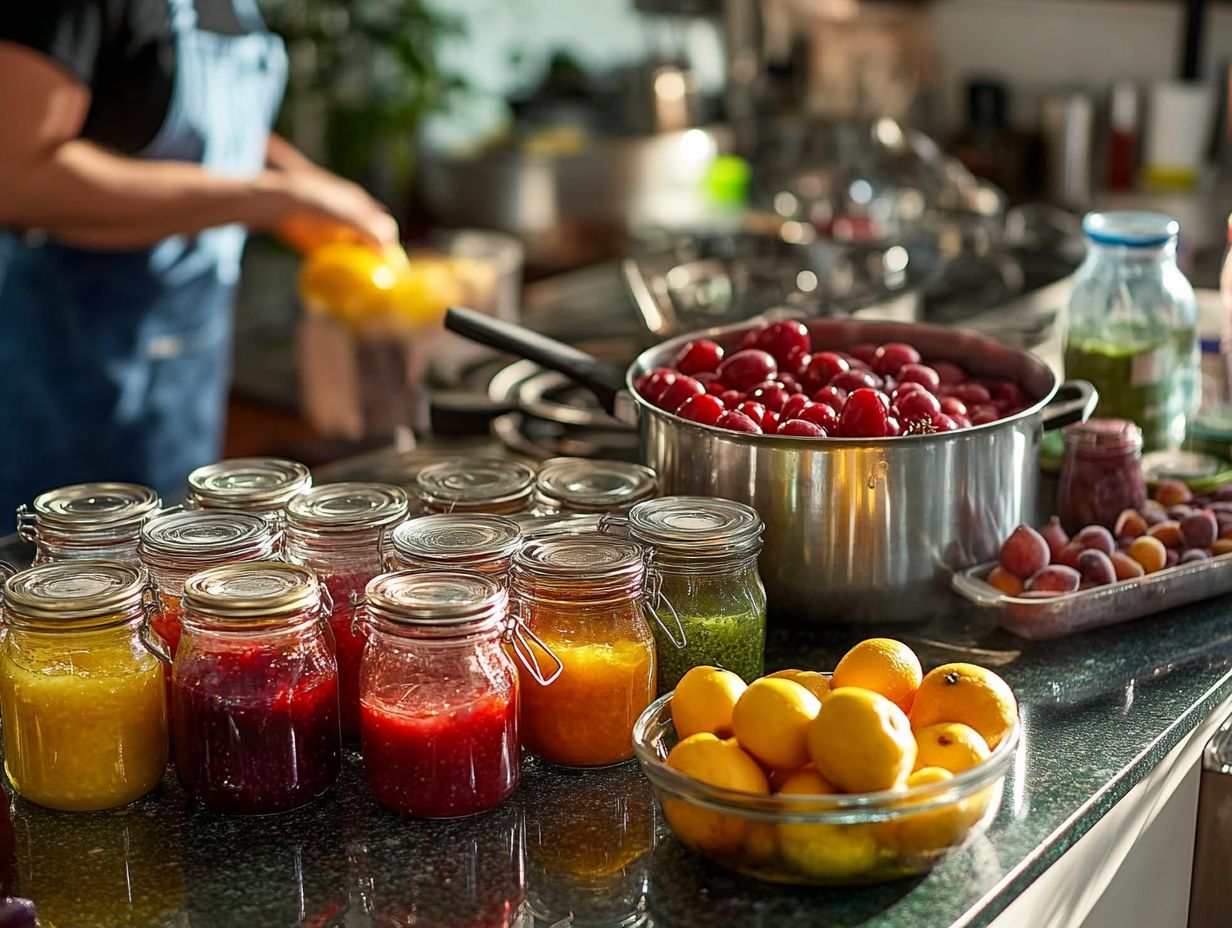
Choosing the right ingredients for canning is essential. The type of food you select high-acid or low-acid dictates the safety and success of your canning journey.
High-acid foods include tomatoes, berries, and citrus fruits. They usually have a pH of 4.6 or lower, making them suitable for water bath canning. In contrast, low-acid foods like vegetables and meats require pressure canning to effectively eliminate harmful bacteria. Understanding this distinction is vital, as using improper methods can lead to foodborne illnesses.
Adjusting seasoning levels enhances the taste and quality of your preserved foods. Careful measurements and high-quality ingredients are crucial in the canning process and directly impact the outcome of your culinary efforts.
Calculating Proper Ratios
Calculating the proper ratios is essential in canning to ensure the safety and quality of your preserved foods. To enhance your canning experience, consider checking out how to plan a canning party for tips on ingredient adjustments and maintaining the correct pH level for effective preservation.
This careful approach extends shelf life and safeguards against the growth of harmful bacteria. When you modify recipes, remember that changes to the acid content can significantly impact the overall safety of the final product. Using methods like measuring acid levels with pH test strips can help keep the mixture within the recommended range.
Sticking to tested recipes is vital; these have been lab-verified for safe processing times. Follow established canning guidelines to ensure the safety and quality of your food!
Adjusting for Different Altitudes
Adjusting for different altitudes in canning is essential. Higher elevations can impact processing time, necessitating specific modifications to uphold the safety and effectiveness of your recipes.
When canning at elevations above 1,000 feet, the boiling point of water decreases. This means that your foods might not reach the critical temperature needed to eliminate harmful bacteria and microorganisms effectively.
Making these adjustments is crucial for preserving the integrity of your canned products. Failing to consider altitude can jeopardize their quality and safety.
To navigate these necessary adjustments, consult altitude-specific canning guides that detail precise modifications. By following these guidelines, you can elevate your food preservation efforts and ensure your canned fruits and vegetables are not just safe but also delicious!
Testing and Adjusting Your Recipe
Testing and adjusting your canning recipes is a crucial step in ensuring food safety. By conducting pH tests and making necessary adjustments, you can effectively mitigate potential hazards, such as botulism, safeguarding both the quality of your preserves and your peace of mind.
Conducting pH Tests
Conducting pH tests is essential when canning high-acid foods. It plays a crucial role in preventing botulism and ensuring food safety.
By understanding the acidity levels of your ingredients, you can guarantee that foods like tomatoes and pickles are preserved correctly and safely. To perform a pH test, use a reliable pH meter or test strips, and follow the manufacturer s instructions for accurate readings.
For safe canning, ideal pH levels for high-acid foods should typically be 4.6 or lower. Regularly checking these levels helps interpret your results and underscores the importance of adhering to recommended canning guidelines.
This diligent practice minimizes the risk of bacterial growth, ensuring the long-term safety and quality of your home-canned goods.
Adjusting for Safety
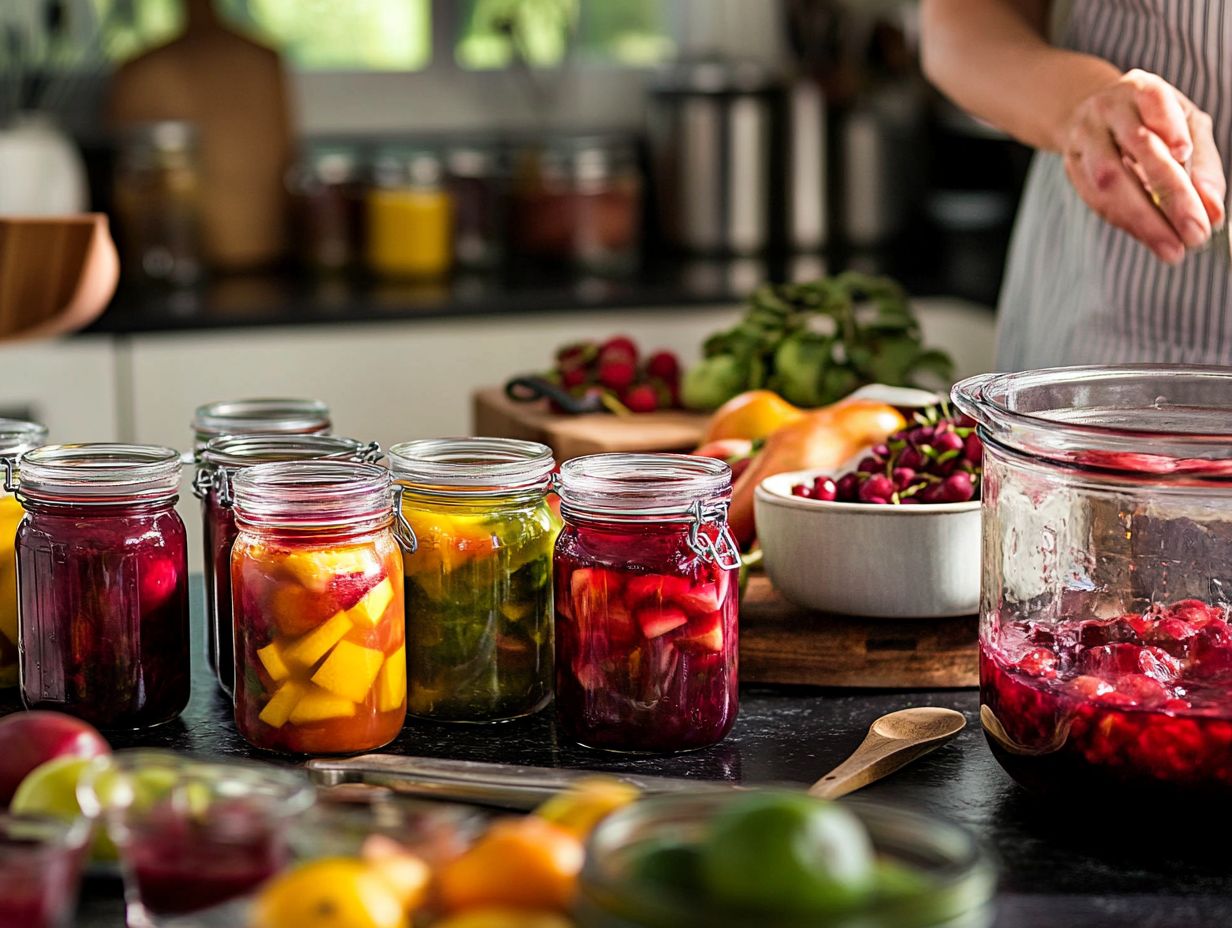
Making necessary adjustments for safety in your canning recipes is crucial. Improper techniques can lead to significant food safety concerns, including the risk of botulism.
To achieve a successful and hazard-free canning process, you need to be mindful of common ingredient modifications. Be cautious about replacing high-acid foods with lower-acid varieties or tweaking the amounts of sugar and salt to preserve flavor without compromising safety.
Recognizing that processing times change based on altitude and equipment types is essential for maintaining the integrity of your food. It s vital to stick to established food safety guidelines, which include using tested recipes from reputable sources, keeping an eye on jar seals, and processing jars at the right pressure and duration.
This careful attention protects your delicious creations and keeps your loved ones safe!
Documenting Your Recipe
Documenting your canning recipes is essential for achieving both consistency and safety. By carefully recording your ingredients and measurements, you empower yourself to replicate successful batches and refine your methods in the future. For more tips on this process, check out how to read canning recipes.
This practice enhances your culinary skills and ensures that each jar you create meets your high standards.
Recording Ingredients and Measurements
Recording ingredients and measurements is a crucial practice in your canning efforts. This ensures both consistency and safety in your food preservation.
This careful documentation helps you achieve the desired flavor and texture while maintaining the correct acidity levels necessary for food safety.
When you develop your own recipes, these recorded details become your trusted guide, allowing you to replicate successful batches in the future. To improve your canning experience, learn how to plan your canning season. Maintaining a designated canning journal or using a digital app enhances clarity and organization, streamlining the process of refining your techniques.
By grasping the importance of accurate measurements, you can elevate your canning skills, resulting in preserved goods that are both delicious and safe for long-term storage.
Storing and Sharing Your Recipe
Storing and sharing your canning recipes with the community fosters culinary creativity and ensures that invaluable techniques and flavor combinations are preserved for future generations. For more guidance, check out how to plan your canning schedule.
To effectively manage these treasured recipes, explore various storage methods, both digital and physical. Employing recipe management apps or establishing dedicated folders in cloud storage can simplify access and make updates easy. Alternatively, a well-organized binder filled with handwritten notes or printed recipes adds a charming, nostalgic touch.
When sharing these recipes, it s essential to acknowledge their origins, honoring the efforts of fellow canners. Engaging with the canning community through local clubs or online forums opens up a treasure trove of resources, transforming the art of preservation into a shared journey brimming with support, creativity, and inspiration.
Frequently Asked Questions
What is canning and why would I want to create my own recipe?
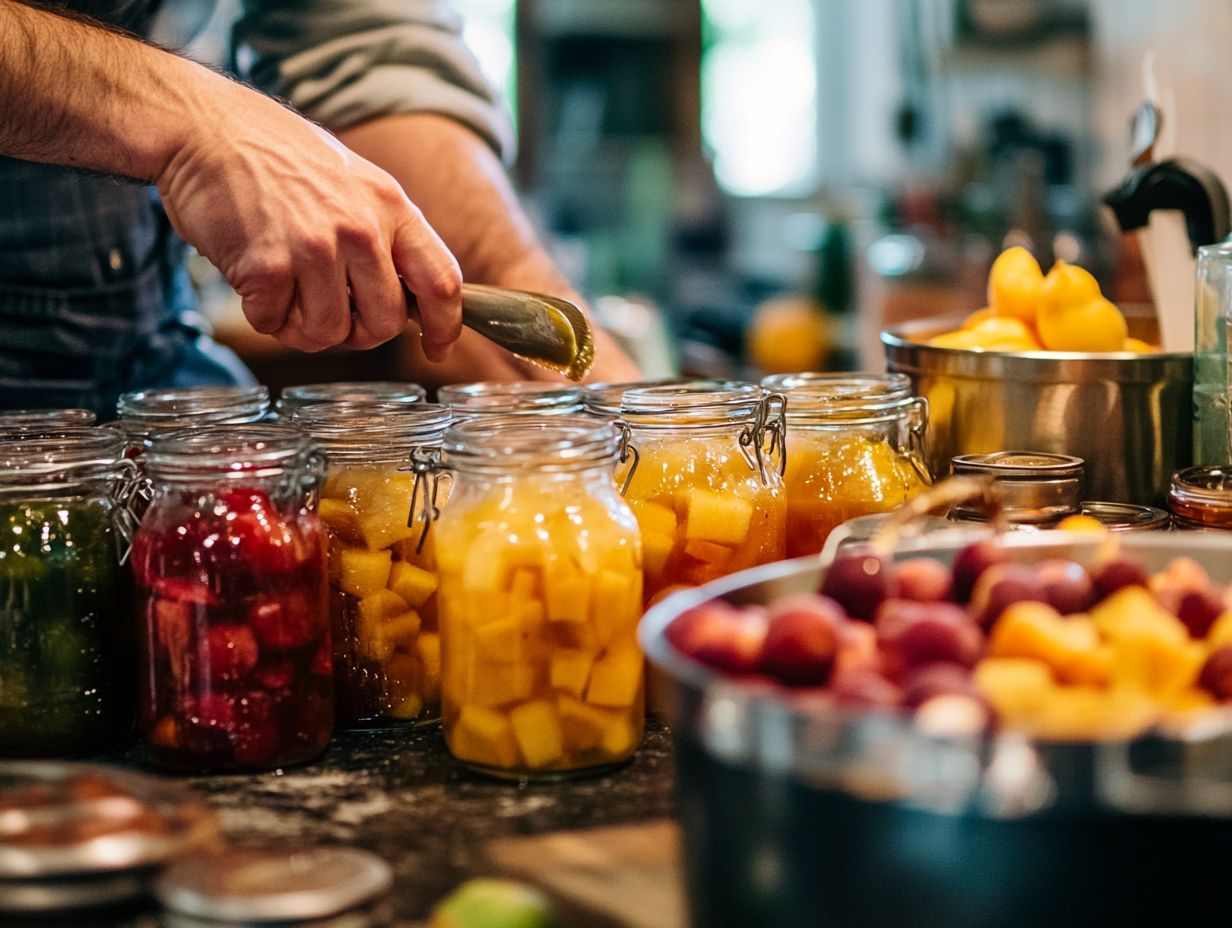
Canning is a method of preserving food by sealing it in airtight containers. If you’re interested in DIY projects, making your own canning equipment can be a fun way to customize your canning experience. Creating your own canning recipe allows you to control the ingredients and flavors in your preserved foods, making them personalized to your taste preferences.
Ready to start canning? Here’s what you’ll need!
Yes, you will need basic canning equipment such as jars, lids, and a canning pot. You may also need a canning recipe book or access to reliable canning recipes online.
What are the key steps to creating my own canning recipe?
- Choosing the ingredients
- Adjusting the ratios
- Following safe canning practices
- Testing the recipe for safety and flavor
Disclaimer: Always consult reputable sources or seek professional advice when starting your canning journey to prioritize safety.
Ready to embark on your canning adventure? Start experimenting with how to layer ingredients for effective canning and share your delicious recipes with others!
How can I ensure the safety of my homemade canning recipe?
To keep your canning recipe safe, follow proper canning techniques. Additionally, you might want to learn how to make your own canning labels to ensure each jar is clearly marked. Use tested recipes and check the acidity of your ingredients.
Can I use any type of jar for my homemade canning recipe?
No! Always choose jars made for canning. These jars are heat-resistant and have special lids for an airtight seal.
What are some common mistakes to avoid when creating my own canning recipe?
Avoid using non-canning jars and ensure your equipment is properly sterilized. Additionally, learning how to customize your canning equipment can enhance your canning process. Don’t change ingredient ratios too much, as this can compromise safety.


